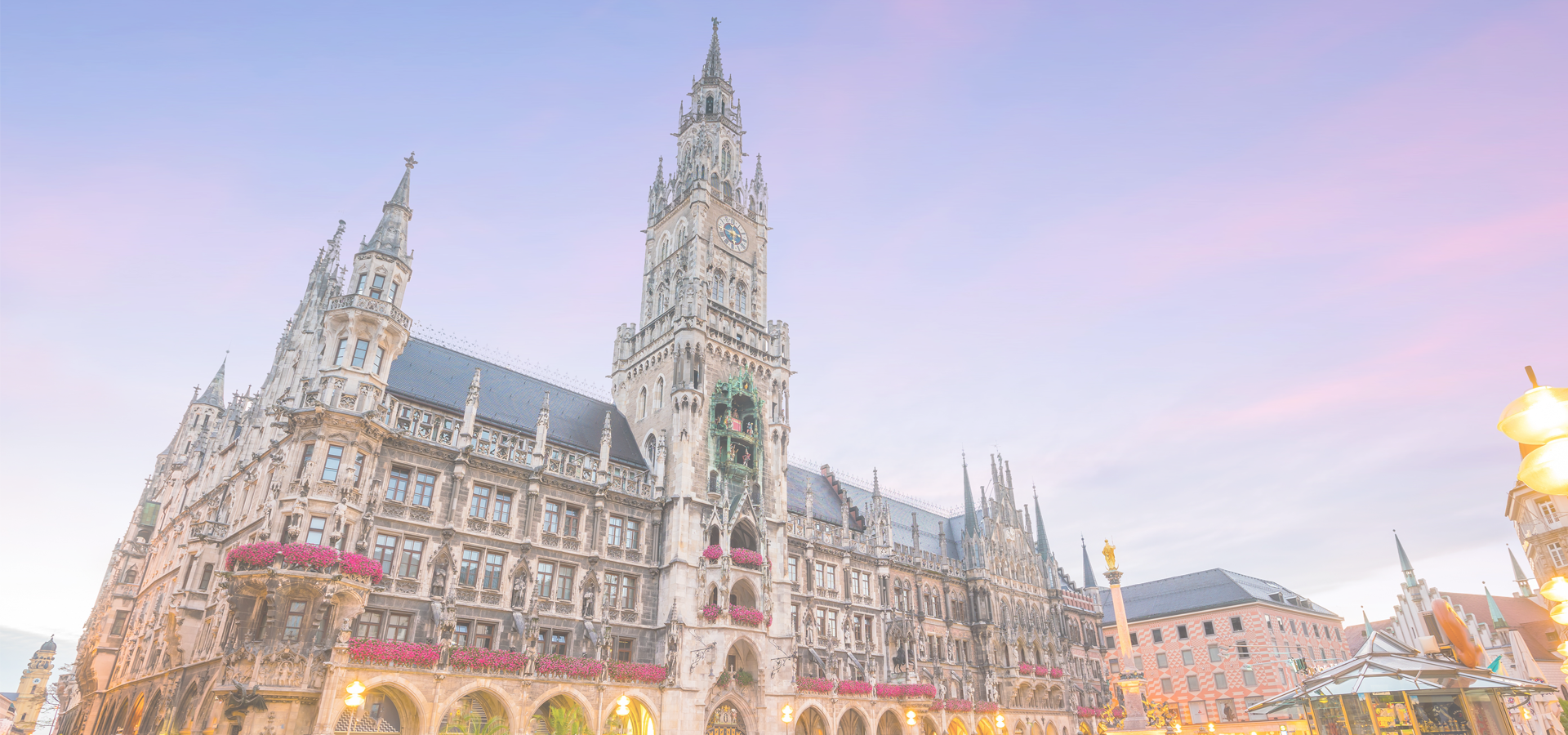Füssen, Swabia, Bavaria, Germany
🇩🇪 Füssen is a town in Bavaria, Germany, in the district of Ostallgäu, situated one kilometre from the Austrian border. The town is known for violin manufacturing and as the closest transportation hub for the Neuschwanstein and Hohenschwangau castles.
History Füssen was settled in Roman times, on the Via Claudia Augusta, a road that leads southwards to northern Italy and northwards to Augusta Vindelicum (today's Augsburg), the former regional capital of the Roman province Raetia. The original name of Füssen was "Foetes", or "Foetibus" (inflected), which derives from Latin "Fauces", meaning "gorge", probably referring to the Lech gorge. In Late Antiquity Füssen was the home of a part of the Legio III Italica, which was stationed there to guard the important trade route over the Alps.
Füssen later became the site of the "Hohes Schloss" (High Castle), the former summer residence of the prince-bishops of Augsburg. Below the Hohes Schloss is the Baroque complex of the former Benedictine monastery of St. Mang, whose history goes back to the 9th century. Füssen has Saint Mang (Magnus of Füssen) as its patron saint. He and his Benedictine brother Theodor were two monks from the Abbey of Saint Gall and are considered to be its founders, in addition to the Monastery of Kempten. Magnus' original burial place was in the small chapel he built. His bones were transferred to the crypt of the church built in 850. Around the year 950 all his bones disappeared.
The canting coat of arms, depicting a triskeles symbol (alluding to the German Füsse "feet"), is based on a city seal used in the early 14th century.
In 1745, the Treaty of Füssen was signed between the Electorate of Bavaria and Habsburg Austria, ending Bavaria's participation in the War of the Austrian Succession.
During the 19th century, composer Richard Wagner used to come to Füssen by railway when he visited King Ludwig II of Bavaria.
History: Recent Since the 1950s the town has been familiar to travellers as the southern terminus of the Romantic Road. Füssen was host to the 1988 World Junior Curling Championships.
Geography Füssen is located on the banks of the Lech River, which flows into the Forggensee. The Forggensee is a man-made lake which was built to prevent flooding. It is the catchment area for all the melting snow in the spring, and is drained after the middle of October.
Füssen at night with Ammergau Alps-mountains Tegelberg (left) and Säuling (right); in the middle Neuschwanstein Castle
Füssen is 808 meters (2,651 ft) above sea level, surrounded by mountains of the Ammergau Alps. The castles of Neuschwanstein and Hohenschwangau are located near the town. At latitude 47°34 N it is one of the southernmost towns in Germany, at roughly the same latitude as Seattle, Washington, United States.
Attractions The High Castle houses a branch gallery of the Bavarian State Collections of Paintings, which focuses on late Gothic and Renaissance works of art.
The oldest fresco in Germany can be found in the crypt of St Mang's Basilica. It dates back to about the year 980.
St Mang's Feast Day (6 September) is commemorated with a Holy Mass followed by a procession by torchlight through the old part of the city. During the week of the Saint's Feast a special 'Magnus Wine' is sold, with only 500 bottles produced.
Known beyond Füssen is the success of EV Füssen, the local Oberliga ice hockey club.
The Musiktheater Füssen is close to the lake Forggensee.
Media: Local The local newspaper for Füssen is the Allgäuer Zeitung, printed daily except Sundays and on Holy Days of Obligation. It contains a special section with news from Füssen and the surrounding towns and villages called the Füssener Blatt.
Europe/Berlin/Bavaria

Füssen has a population of over 15,538 people. Füssen also forms part of the wider Ostallgäu District which has a population of over 141,907 people. It is also a part of the larger Schwaben Region. Füssen is situated 29 km south of Marktoberdorf.
Twin Towns, Sister Cities Füssen has links with:
🏴 Airdrie, Scotland 🇳🇴 Bardu, Norway 🇮🇹 Cremona, Italy 🇺🇸 Helen, USA 🇯🇵 Numata, Japan 🇮🇹 Palestrina, Italy🇭🇺 Óbuda-Békásmegyer 47.567
🇩🇪 Waldshut-Tiengen 47.617
🇺🇦 Voznesensk 47.567
🇭🇺 Rákospalota 47.567
🇨🇦 St. John's 47.561
🇨🇭 Frauenfeld 47.556
🇨🇭 Rheinfelden 47.55
🇭🇺 Budapest XV 47.55
🇮🇹 Montecatini Terme 10.783
🇩🇪 Nordhausen 10.794
🇩🇪 Bad Schwartau 10.683
🇳🇴 Nesoddtangen 10.65
🇮🇹 Reggio Emilia 10.641
🇩🇪 Kaufbeuren 10.625
Locations Near: Füssen 10.7,47.5667
🇩🇪 Marktoberdorf 10.617,47.767 d: 23.1
🇩🇪 Kaufbeuren 10.625,47.881 d: 35.4
🇩🇪 Garmisch-Partenkirchen 11.083,47.5 d: 29.7
🇩🇪 Kempten im Allgäu 10.317,47.733 d: 34.2
🇩🇪 Kempten 10.317,47.733 d: 34.2
🇩🇪 Landsberg am Lech 10.883,48.033 d: 53.7
🇩🇪 Mindelheim 10.5,48.037 d: 54.4
🇩🇪 Weilheim in Oberbayern 11.15,47.833 d: 44.9
Antipodal to: Füssen -169.3,-47.567
🇹🇴 Nuku'alofa -175.216,-21.136 d: 17028.5
🇦🇸 Pago Pago -170.701,-14.279 d: 16311.4
🇼🇸 Apia -171.76,-13.833 d: 16257.1
🇵🇫 Papeete -149.566,-17.537 d: 16222.5
🇺🇸 Hilo -155.089,19.725 d: 12398.9
🇺🇸 Maui -156.446,20.72 d: 12313.8
🇺🇸 Maui County -156.617,20.868 d: 12300.5
🇺🇸 Wailuku -156.505,20.894 d: 12295.8